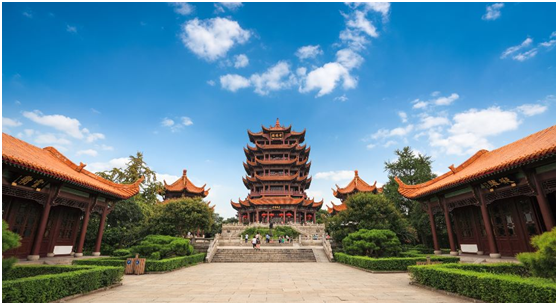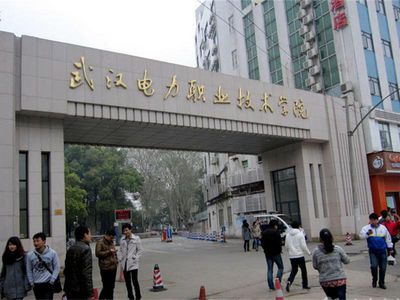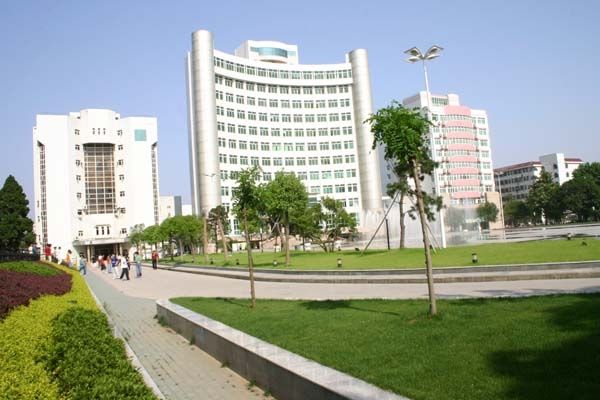Wuhan Electric Power Technical College
Wuhan City, Hubei Province


Wuhan is the capital of Hubei Province in the People's Republic of China. It is the largest city in Hubei and the most populous city in Central China, with a population of over eleven million, the ninth-most populous Chinese city and one of the nine National Central Cities of China.
The name "Wuhan" came from the city's historical origin from the conglomeration of Wuchang, Hankou and Hanyang, which are collectively known as the "Three Towns of Wuhan". Wuhan lies in the eastern Jianghan Plain, at the confluence of the Yangtze river and its largest tributary, the Han River and is known as "Nine Provinces' Thoroughfare".
Wuhan is considered by some to be one of the potential sites of the pivotal Battle of the Red Cliffs, a battle that stopped warlord Cao Cao's incursion into southern China at the end of the Eastern Han dynasty. Other historical events taking place in Wuhan include the Wuchang Uprising of 1911, which led to the downfall of the Qing dynasty and the establishment of the Republic of China. Wuhan was briefly the capital of China in 1927 under the left wing of the Kuomintang (KMT) government led by Wang Jingwei. The city later served as the wartime capital of China for ten months in 1937 during the Second Sino-Japanese War. Wuhan is considered the political, economic, financial, commercial, cultural and educational center of Central China. It is a major transportation hub, with dozens of railways, roads and expressways passing through the city and connecting to other major cities. Because of its key role in domestic transportation, Wuhan is sometimes referred to as "the Chicago of China" by foreign sources. The "Golden Waterway" of the Yangtze River and the Han River traverse the urban area and divide Wuhan into the three districts of Wuchang, Hankou and Hanyang. The Wuhan Yangtze River Bridge crosses the Yangtze in the city. The Three Gorges Dam, the world's largest power station in terms of installed capacity, is located nearby. Historically, Wuhan has suffered risks of flooding, prompting the government to alleviate the situation by introducing ecologically friendly absorption mechanisms.
While Wuhan has been a traditional manufacturing hub for decades, it is also one of the areas promoting modern industrial changes in China. Wuhan consists of three national development zones, four scientific and technological development parks, over 350 research institutes, 1,656 high tech enterprises, numerous enterprise incubators and investments from 230 Fortune Global 500 firms. It produced GDP of US$224 billion in 2018. The Dongfeng Motor Corporation, an automobile manufacturer, is headquartered in Wuhan. The city is home to multiple notable institutes of higher education, including Wuhan University and the Huazhong University of Science and Technology. Wuhan is also one of the major cities in the world by scientific research outputs and it ranks 13th globally and 4th in China (after Beijing, Shanghai and Nanjing). In 2017, Wuhan was designated as a creative city by UNESCO, in the field of design. Wuhan is classified as a Beta- (global second tier) city together with seven other cities in China, including Changsha, Dalian, Jinan, Shenyang, Xiamen, Xi'an and Zhengzhou by the Globalization and World Cities Research Network.
Introduction of the college


Wuhan Electric Power Technical College was formerly Wuhan Power School, established in 1953, organized by the Hubei Electric Power Company, to accept the business guidance of Hubei Province Department of Education in 2002 approved by the Hubei Provincial People's Government, be converted into ordinary vocational colleges. College and Hubei Electric Power Company Management Training Centre, School of the CPC Hubei Electric Power Company and Hubei University for power engineers, '4 brand, a team' management. After 57 years of construction and development, has become a distinct school characteristics, teaching advanced equipment, strong teachers, students high employment rate, rich culture, campus environment elegant, modern society reputable colleges, known as 'Hubei Power Whampoa' of reputation.
The College is a vocational training level institutions assess quality schools, higher vocational institutions in Hubei model building institutions, national demonstration base for training highly skilled personnel, the National Electric Power Vocational Colleges Collaboration director of the school, has won ' Hubei Labor Award ',' Best Civilization Unit of Hubei Province 'and other honorary titles.
Over the years, the College has always insisted that 'rooted in the power industry, for Hubei economy' as the service direction, and gradually formed a company to higher vocational education and staff training as the main, secondary vocational education, adult education, international cooperation in education, multi-phase matching level school structure.
College of Engineering now has the power, power engineering, construction engineering, information engineering, Electrical and Mechanical Engineering, Department of Economics and Management Department of the Ministry six major professional, Ideological and Political Education and the Department of the Ministry of Basic two public courses. College offers 27 vocational specialty, general and more than 5,500 full-time vocational students, adult education students in school more than 1,300; grade the year after the scale of training more than 52,000 people days, the annual workload of 5,000 people identified.
The college has 434 faculty, including 279 full-time teachers, 135 senior engineers, masters or above 68, 'Double' Teachers 145. College teaching equipment worth 37.09 million yuan, has a test, more than 90 practice areas and more than 140 enterprises with external established stable relations of cooperation.
English Teachers Number required: 2 Posts
Requirements: BA and TESOL /TEFL. Some teaching experience preferred
Monthly Salary: 10000-12000 RMB (Including Housing Allowance)
Contract Period: 1st Mar, 2025 - 31st Jan, 2026
1st Sep, 2025 - 15th Jul, 2026
Teaching hours: 16-18 classes per week
Age of students: 18-20
Number of students per class : around 40
Travel allowance and transportation fee: 2,000 RMB per school term
Accommodation: The teacher needs to rent a house by himself/herself, the school will help the teacher to deal with the relevant rental procedure.
Internet access (Free): internet access (broadband) with computer in the apartment
Medical Insurance: The school will provide medical service at the school clinic
Paid Holiday : 2 days off per week; public holidays in China; winter holiday.
Work permit : The school will provide work permit for China at no cost to the teacher.
Air-ticket Reimbursement: On completion of a school year contract, a round way air-ticket reimbursement will be made for maximum 8,000 RMB
Closest Airport: Wuhan Tianhe airport